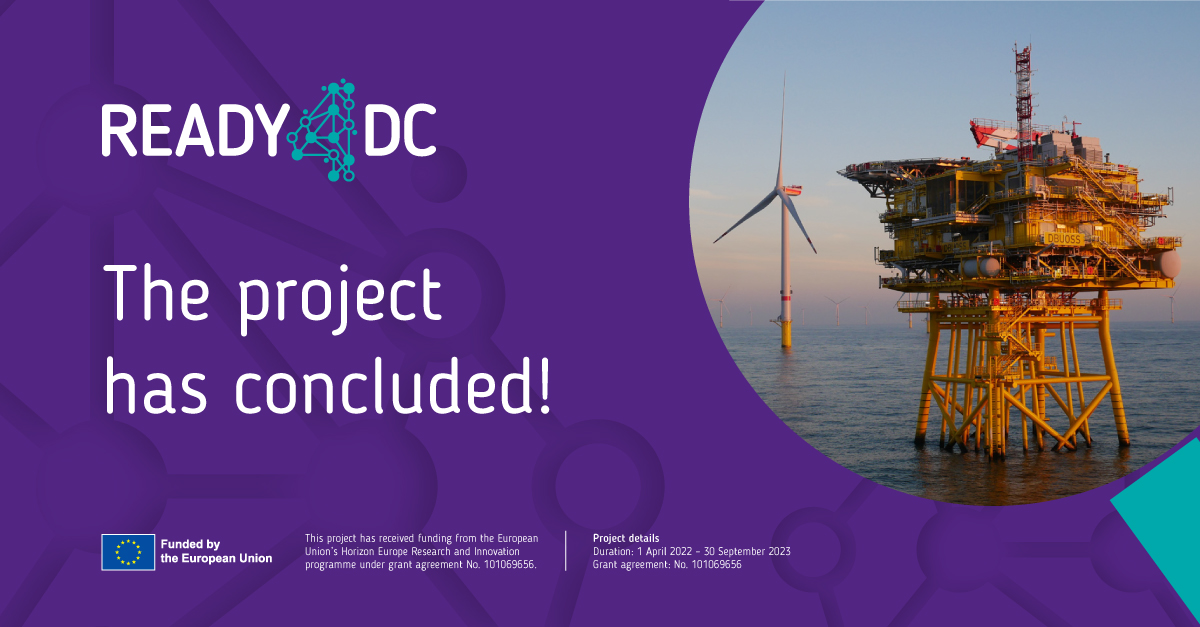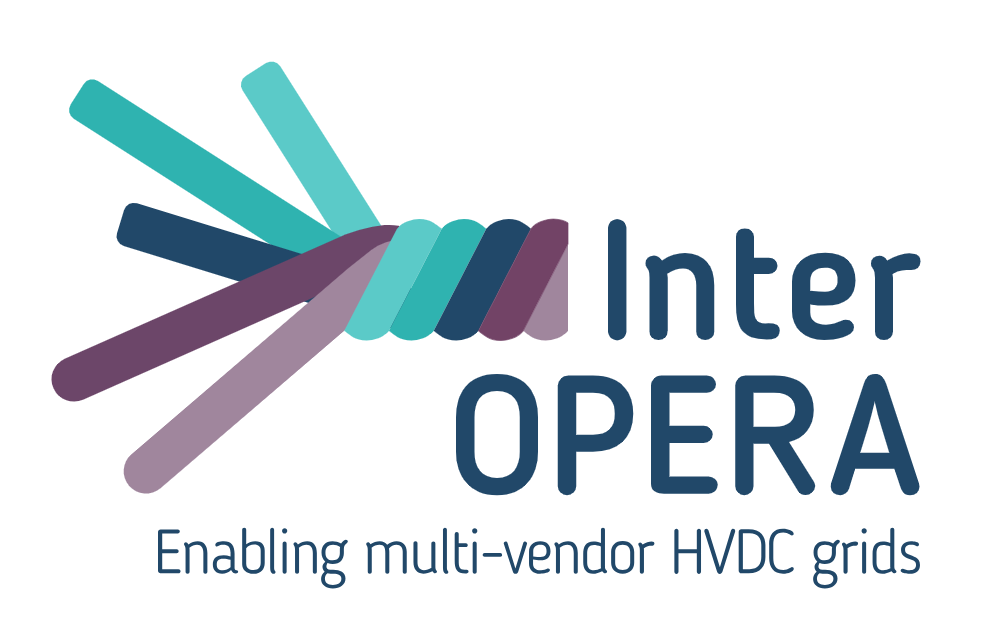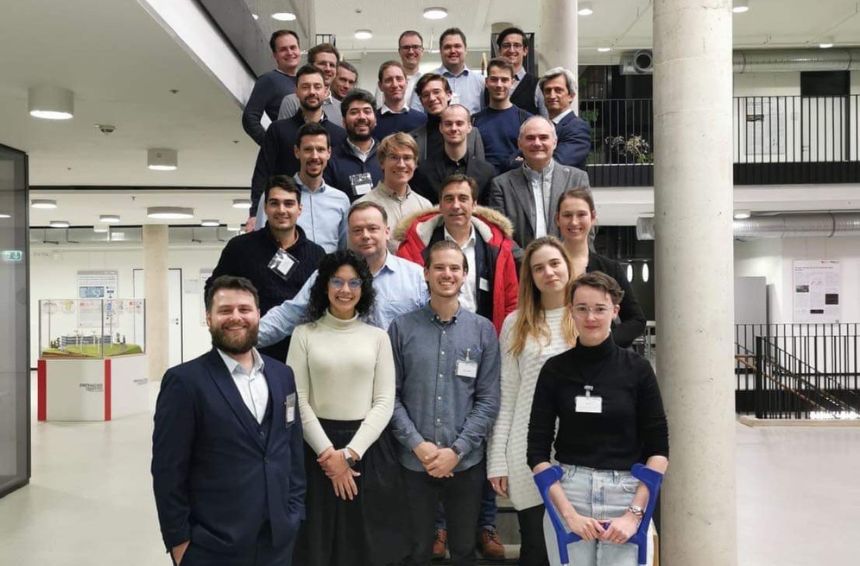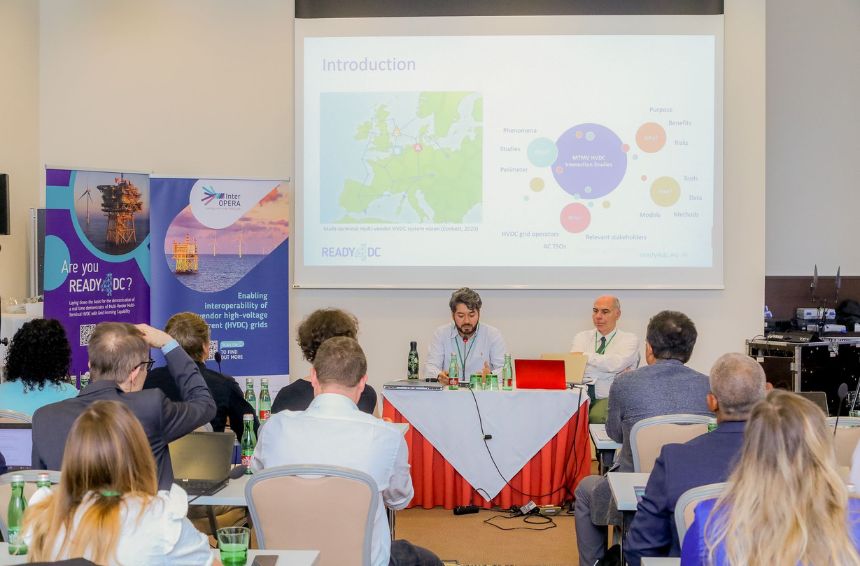Laying the foundations for multi-terminal, multi-vendor HVDC projects: READY4DC comes to and end
The READY4DC project concluded in November 2023 after 20 months of intensive work, laying essential foundations for the development of Europe’s first multi-terminal, multi-vendor HVDC project. Supported by Horizon Europe, the project aimed to create a community of experts to address the technical and legal aspects of designing and building an interoperable multi-vendor DC grid. We are proud to have contributed to this project, notably by heading up the project’s first work package focused on modelling, simulation frameworks and data sharing for multi-vendor HVDC interaction studies and large-scale EMT simulation.

The READY4DC project not only focused on the technical aspects of multi-terminal, multi-vendor HVDC projects but also considered the roles and responsibilities of different stakeholders, such as vendors, integrators, and supporting third parties. SuperGrid Institute played a pivotal role in this initiative, leading the first work package. During the project, we submitted Deliverable 1.2 as part of our responsibilities within this work package. The deliverable emphasises three core areas:
- A Paradigm Shift: The transition from single vendor to multi-terminal HVDC projects, which introduces new complexities in ensuring coordination and interoperability between different systems and components supplied by various vendors.
- Crucial Role of Interaction Studies: The deliverable underlines the importance of interaction studies. These are crucial for mapping out the interplay between different parts of multi-vendor HVDC systems. By understanding these interactions, stakeholders can ensure that the systems work together reliably and robustly, which is essential for stable and efficient grid operation.
- Stakeholder Cooperation: Deliverable 1.2 also stresses the importance of collaboration among all parties involved in HVDC projects. Clear communication and coordination are particularly vital among the main stakeholders (TSOs, vendors, owners, public and private R&D institutions) to address the challenges inherent in multi-vendor projects and to ensure their success.
A structured workflow for conducting interaction studies is also introduced in this deliverable. This workflow involves stakeholder collaboration, effective model integration, meticulous testing, and insightful analysis to validate system interoperability. Converter openness and the choice of simulation tools are also mentioned as having significant impacts on methodological considerations and stakeholder responsibilities, highlighting the need for careful selection to ensure accuracy and performance in interaction studies.
READY4DC laid the foundations for the development of Multi-Terminal Direct Current (MTDC) networks. The work continues today with the InterOPERA project (coordinated by SuperGrid Institute) which aims to make future HVDC systems interoperable by design, and to improve the grid forming capabilities of offshore and onshore converters.
InterOPERA is not only about developing technical standards but also about agreeing on the procurement, commercial, legal and regulatory frameworks that will facilitate the tendering, building and operation of full-scale HVDC multi-terminal, multi-vendor, multi-purpose real-life applications anticipated by 2030.

Stay up to date with all the latest updates and advances from InterOPERA on their website and socials:




